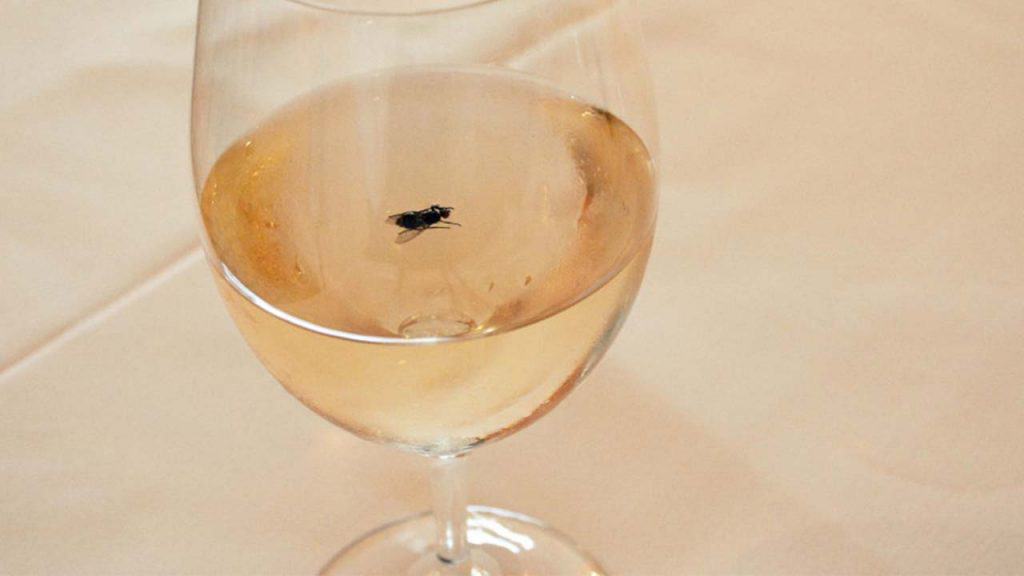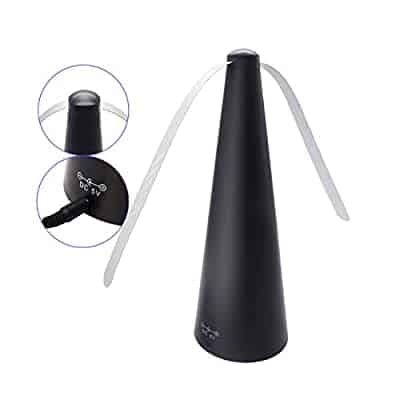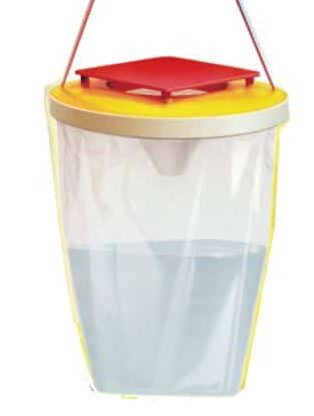Pest Control Checklist for Restaurants
The fly control checklist for restaurateurs, matradee’s, chef’s & hospitality managers.
Pest control, particularly fly control, is vital in restaurants. A fly buzzing around a customer is hard to ignore. It is even harder to remove. For a little creature, they sure leave a lasting impression.
Don’t let a fly decrease your repeat custom or feature in your online reviews.

Why all restaurants require fly control
- Food Standards Australia and New Zealand state If you’re a food business, it’simportant that you keep food safe and protected from pests and the harmful Microorganisms they can carry.
- Customer perception. Flies signify lack of hygiene. Although not necessarily the correct, the perception is one you don’t want associated with your establishment.
- Flies carry disease, which spreads every time they land. It’s not a pretty thought.
- Customer experience. Provide an enjoyable, fly free experience while eating at your restaurant. Remember last time you had a fly bothering you while you wereeating? Flies may be acceptable at an outdoor barbecue but not at a restaurant. Food and flies do not mix.
- Negative online reviews are a sure-fire way to kill a food business. Do not let flies be your downfall. Go for the five stars, not the fly stars.
- Reputation and perception are interlinked. Flies will cost you a decline in business, decreased patronage and loss of income.
- Positive feedback. A fly free restaurant will encourage your customers to stay seated longer.To order that extra glass of wine, to return often. To spread positive word of mouth and glowing reviews about their experience.
Under Standard 3.2.2 – Food Safety Practices and General Requirements, your business must do everything it reasonably can to prevent pest problems. This includes
- Pests are stopped from entering or living in your food premises.
- Pests are eradicated from your premises and vehicles used to transport food.

What to consider when looking at fly control?
Fly control will ensure that food and food contact surfaces are protected from contamination by flies. It helps food businesses demonstrate they are taking all practicable measures to eradicate and prevent the harbourage of flies. (under Standard 3.2.2 clause 24).
Things to consider:
- Type of fly to be treated: Fermentation flies such as a vinegar or fruit flies, sometimes called drain or bar flies. Fermentation flies are small, about the size of a pin head. The larger flies such as house or blow flies are approximately the size of a finger nail.
- Areas to be treated: Pests in restaurants are generally attracted to moisture and food. Common areas to treat include rubbish bin recesses, bottle bins, beneath bars and beer taps, entry to kitchens, beside back doors, behind service counters, large glass windows ie shop front windows.
- Types of treatment to be used (e.g. baits, sprays, traps, etc.) Include safety and shelf-life information on the chemicals. Ensure chemicals are suitable and approved for use in food premises.
- Locations of fly control devices such as insect attractants, spray dispensers, fly screens. Ensure they are placed in areas that minimise the risk of pesticides or killed pests coming in contact with food or food contact surfaces. It may be useful to draw up a site map marking the locations of pest control devices.
- The frequency of inspections and pest treatment: Frequency and timing will depend on individual circumstances, such as the premises’ location, climate, type of food, type of pest, season and signs of pest activity. Inspections and treatments should occur regularly. Often enough to ensure chemicals are not used beyond expiration dates. Used baits and traps are replaced or reset. Killed pests are removed so the premises remain free from pests.
Must l hire a pest controller?
Hiring a professional pest controller is not a requirement under these standards. If pests cannot be adequately controlled by the food business itself, a professional pest controller should be called in.
Not keen on paying a pest controller every 4 weeks to come and fix a fly problem? Fair enough too! The Fly Lady can supply all you need to fix the issue. All food approved and easy to use. With the Fly Lady, fly issues are problem every restaurant can afford to eliminate.
“Prevention – always better than cure”
Summer in Australia means flies. Be a step ahead and have the solution in place and ready to switch on. Avoid fly problems by creating a fly free zone in your restaurant today.
What is the health inspector looking?
- Products used in food spaces must be appropriate for the task, food safe and HACCP approved.
- Pest Control Devices must be installed in suitable locations.
- Correct function of the product.
- Staff procedure for reporting pest activity and how that is communicated to management.
- Fly Control Units. Even if your units are switched off and there is no fly activity, the functioning unit is evidence you are proactive about pest control. When the flies arrive with Summer, your set to go.
What causes pest problems in restaurants?
- Open doors and windows.
- Wonderful cooking smells wafting on the breeze. Research out of the University of Kentucky, Entomology Department found that common house flies easily travel three kms. The “record” individuals were shown to travel between eight and 32 km within the first four days of being turned loose! Flies are attracted by smell and that familiar buzz in the kitchen may be an indication your range hood is not working efficiently to remove cooking odours or the hood’s outlet vent needs to be relocated. Notice to how the food arrives in front of your customer at precisely the same time as the flies. It’s the same theory. They are drawn to the smell.
- Summer! Flies are rare in the cooler months but can reach significantly higher numbers in summer.
- Dumpsters and external bins are a flies paradise. Everything they need for a long happy life.
- Surroundings including parks with grass clippings and garden beds with fertilisers, dogs quietly peeing curb side and council bins.
- Your commercial kitchen hits the fly jackpot. Supplying food, water and warmth.
The Restaurant Pest Control Checklist
The Restaurant Pest Control Checklist will help you stay ahead of the problem by highlighting potential problem areas and things to keep your eye on. These small tweaks can save you big headaches later:
Outdoor Areas:
Bins and bin areas
- Remove all rubbish bins and bottle bins as far away from the back door as possible.
- Keep bins in a shaded position to reduce odour
- Zip tie Bin Kill into all your bins. Available Woolworths, Bunnings $10
- Consider any public bins near you. It may be worth treating them with Bin Kill as well.
- Insist on bins being kept closed except when waste is being added.
- No over filling of bins, lids must shut.
- Ensure a policy of sealed bagging of all waste.
- Have dumpsters/ bins hosed out as often as necessary. Adjust if necessary according to the season.
- Empty beverage containers before binning and crush where possible to minimise residue content.
- Add Envirosafe Fly traps into the bin area on property perimeter. Available at Bunnings $9.99 Ensure these traps are positioned well away from the building as they attract flies. They are very effective, get quite smelly and are disgusting to empty and refill but they trap masses of flies. Best hung in a sunny position, well out of sight.
- If you have bins at your back door, consider putting in commercial strip doors, as used in freezers and cool rooms. You won’t have to worry about the back door being left open. They are available in opaque or clear, are inexpensive and easy to fit. Draw back – the delivery guys hate them.
- Alternatively, fit a spring-loaded fly wire screen door.
- Keep loading dock clean, pressure clean regularly and dispose of cardboard daily.

Buzz Off Fly Fan

The Fly Trapper Plus
Around Your Premises
- Keep exterior furniture, pathways and surroundings clean and free of refuse.
- Hose down outdoor dining areas nightly and pressure wash regularly to remove all food and spills, including foot paths.
- Where feasible, mount external lighting away from the building, so the light source shines towards your building. The nocturnal insects will be attracted to the light source, not your building.
- Keep flowering plants ten meters away from entrances and open windows.
- Eliminate from gardens any heavily layered moist compost or mulch with high organic content.
- Many breeds of flies emerge from the soil. By layering aquarium gravel or very coarse sand in the top of your pots you can stop the insects laying eggs in the soil. Very handy if you have fermentation flies breeding in your indoor pot plants.
- Consider pot plants or planter boxes with insect repelling plants such as citronella geraniums. NB. Neem trees are renowned for their outstanding fly deterring properties. l have found them difficult to source in my area. They grow into trees. Keep them in pots so you can move them as they get bigger.
- Remove unnecessary water sources.
- Don’t over water your pot plants – ie leave them sitting in dishes of water.
- Keep dogs away as they love marking their territory. Consider providing dog owners with an area to tie their dogs rather than letting them cock their leg on every planter box and tree.
- Consider adding a handful of fly bait to your garden beds. It is very bitter so native animals are not tempted to ingest it.
- Spray down door frames, railings and backs of chairs, with a fly repellent such as Insectashield.
Front of house spaces:
- Efficient clearing of tables.
- Cover food displays with suitable lids, use cabinets with doors.
- Keep food odours to a minimum. Flies are attracted to odours.
- Keep room temperature and humidity low where possible. Flies like it warm and vinegar flies breed at around 26 degrees C.
- Do not display seasonal fruit. Refrigerate it.
- Regularly sanitise items on customers’ tables – condiment bottles, salt & pepper mills, sugar bowls, cutlery holders, etc
- Vacuum /mop floors daily.
- Install weather strips at the base of doors to prevent flies walking under closed doors and screens.
Back of house spaces:
- Ensure all floors are left dry after cleaning procedures. No water left in cracked tiles. Standing water greatly increases the chances of fruit flies breeding.
- Fixing any leaking equipment such as sinks, dish washing machines.
- Routine cleaning of staff areas and personal lockers.
- Routine cleaning under product pallets held in stores/warehousing areas.
- Routine cleaning of drains and sumps using a bio cleansing agent. Unscrew and clean out metal drain tops in floors.
- Clean spillages and leaks in dry store, keep shelving clean and containers sealed.
- Use bins with lids and foot pedal opening where practical. Ensure regular bin emptying and daily rinsing/drying.
- Mops and cleaning cloths rinsed out and dried after use, preferably outside.
- Remove and wash rubber floor mats daily. Hang up outside to dry overnight.
- Seal dirty linen bags at the end of service. Remove from kitchen where possible.
- Remove any spoiled or decaying fruit and veg.
- Keep as much food as possible refrigerated during service.
- Do not use fruit as a display especially during summer.
- If herbs are attracting vinegar flies, refrain from displaying.
- Keep lids on food prep when not in use.
Behind the bar:
- Keep drink garnishes in a container with a lid.
- Keep fruit and veg refrigerated where possible.
- Use tap brushes to seal beer taps overnight.
- Wipe post-mix bar gun and hose every night. Dissemble and sanitise regularly.
Full instructions at the end of this article.
- Wipe over all red wine bottles, especially necks and lids when pack down.
- Empty all beer trays and overflow buckets under the bar – on every close.
- Cover nip measure apparatus on spirit bottle nightly. Cling wrap will suffice short term.
- Leave bar sinks dry and cover drains with an upturned glass or plug.
- Rinse residue out of dirty glasses if they are to be left overnight.
- Drag floor mats outside at the end of each service and hose off, leave outside to dry.
- Thoroughly wash out bar runners and leave to dry outside if possible.
- Do not grow pineapple tops in glasses of water. I see this so often!
- Seal overflow pipes from beer taps, where they meet the drain in the floor. Tape up completely with a wide packing tape.
- Keep the under-bar spaces free of cardboard and clutter. Vinegar flies love these dark, damp spaces.
- Spray under bar spaces, outside of bins, front of the bar, behind the ice machine with a fly repellent such as Insectashield.
Automatic Fly Spray Dispensers
Be prepared this Summer.
Install your automatic dispensers now and enjoy a Summer without flies.
Where to look for vinegar flies
Vinegar flies will typically breed in the following places:
- Floor drains. Relatively small amounts of residual ‘sludge’ in drains can sustain an infestation. Unscrew and clean regularly.
- Poorly cleaned, continually wet, under bench, under bar areas. Inevitably there are crevices in which wet sludge can persist and sustain an infestation.
- Wet / damp mops, dirty linen bags, cleaning cloths and alcohol sullied bar runners and floor mats.
- Decaying fruit or vegetables (or residue thereof) in storage containers.
- Residue left in waste bins which have not been properly cleaned.
- Bottle recycle bins left in the bar, overnight.
- Water receptacles which have accumulated sludge over time, such as refrigerator or air conditioner evaporation trays and water trays.
- Almost any area which is frequently or constantly wet and not subjected to regular, careful cleaning.
- Shelf edges, bulk heads. They like to sit up high during the day, out of the way.
- Wipe/spray down any areas you see with the tiny specks of vinegar fly poo. Bulk heads, around door frames, wall edges, tops of signage, bottle recycle bins, dirty linen bags, mop and broom heads, dustpan and brush sets, eliminated exit signs can be popular
Get your staff involved with your restaurant pest control program.
Fly Control requires a team effort. No one is exempt. From a pre-service spray around outdoor tables with fly repellent to waste management. When trying to get rid of fruit flies, pack down is vital. Kitchens and bar spaces must be clean and dry at close. Use the pest control checklist to guide your team. Are there things they can apply to their section? The old adage applies. Many hands make light work. If you require dispensers and food safe fly spray, click here.





